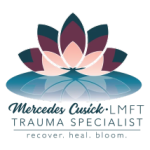In the serene communities of Calabasas and Hidden Hills the specter of PTSD (Post-Traumatic Stress Disorder) looms, impacting many. Discover how EMDR Therapy offers a beacon of hope, transforming lives by unlocking a path to recovery.
Understanding PTSD and Its Impact on Individuals
PTSD, a condition that can shatter lives, often remains misunderstood. It extends beyond the battlefield, affecting individuals of any age, gender, or background. Symptoms, ranging from flashbacks to severe anxiety, profoundly impact one’s daily function and interpersonal relationships.
In Calabasas and Hidden Hills, communities known for their tranquility, the prevalence of PTSD highlights the invisible struggles many residents face. Whether stemming from accidents, natural disasters, or personal violence, the effects of PTSD can permeate every aspect of life, challenging the very essence of well-being.
What is EMDR Therapy?
EMDR (Eye Movement Desensitization and Reprocessing) therapy stands as a groundbreaking approach to mental health treatment, particularly for PTSD. It involves an eight-phase treatment that uses the bi-lateral eye movements to dampen the power of emotionally charged memories of past traumatic events.
Originally created for PTSD, founded by Dr. Francine Shapiro in the 1980s, EMDR therapy’s efficacy has been supported by numerous studies, making it a recommended premiere treatment for trauma by countless organizations worldwide. The therapy’s unique methodology offers new hope for those who have struggled with traditional treatment modalities.
EMDR Therapy’s Approach to Healing PTSD
EMDR therapy is distinguished by its structured framework, aiming to transform how traumatic memories are stored in the brain. By associating traumatic memories with less charged, more neutral information during therapy sessions, EMDR facilitates a healing process that can significantly reduce, or even eliminate, PTSD symptoms.
Weekly EMDR sessions ideally last about 90 minutes, during which the EMDR trained therapist guide client’s through the phases of EMDR therapy. This meticulous approach helps uncover and address the roots of trauma, enabling individuals to process these experiences in a way that promotes emotional healing.
A key component of EMDR’s success is its non-reliance on talk therapy; instead, it directly influences the brain’s information processing. This aspect of EMDR therapy makes it particularly appealing to patients who may find traditional therapeutic methods challenging or ineffectual.
Why EMDR Therapy is Effective for PTSD Sufferers
EMDR therapy offers a lifeline to those burdened by PTSD. Its effectiveness lies not just in its approach but also in its accessibility and adaptability to client’s’ unique needs and experiences.
Local mental health professionals, attuned to the specific traumas and stresses impacting their communities, incorporate EMDR into a comprehensive treatment plan that addresses the multifaceted nature of PTSD. This personalized approach fosters a conducive environment for true healing and recovery.
Moreover, the growing awareness and validation of EMDR therapy within these communities motivate individuals to seek help. This shift not only encourages healing at an individual level but also gradually transforms societal perceptions, reducing stigma around PTSD and mental health treatment.
As testimonies of EMDR’s positive outcomes spread, more individuals are inspired to embark on their own journeys of recovery. The therapy’s role in healing PTSD becomes a testament to the resilience of the human spirit and the power of innovative therapeutic approaches.
About the Author:
I am Mercedes Cusick, LMFT, a certified EMDR trauma therapist specializing in EMDR intensives. I am dedicated to addressing trauma-related challenges and improving mental health outcomes. My commitment to trauma therapy is driven by its significant therapeutic effects, particularly for individuals grappling with complex trauma, PTSD, toxic relationships, and narcissistic abuse.
Serving a diverse community with dedication and empathy, I am proud to support individuals in the Los Angeles area, specifically in Woodland Hills, Calabasas, Agoura, Hidden Hills, West Hills, Northridge, Winnetka, Tarzana, Studio City, Sherman Oaks, Malibu, and Beverly Hills. Together, we can journey toward healing and resilience.







